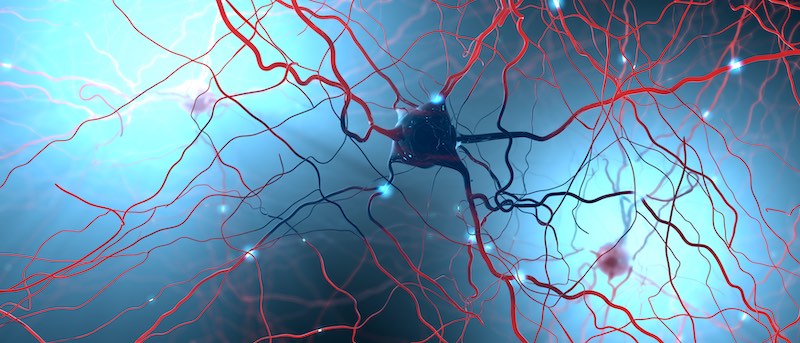Are you someone that experiences persistent pain and does this impact your overall happiness?
As someone that has personally experienced a back injury in sport, managing pain is something I sadly live with especially when I have let go of my daily preventative routine of walking, stretching and massage.
This blog was devised as I sat nursing an injury flare after several non-stretching days combined with moving furniture and lifting in a way that someone with my condition should never do. My injury affects both nerves and muscles so the pain down one leg as it follows the nerve is the worst part of this acute flare.
But there are many types of pain conditions whether by past injuries or other health issues that present the sufferer with chronic daily pain or acute flare-ups or a combination of both.
Chronic pain is Complex
Chronic pain is a common, complex issue that affects millions of Australians – nearly 1 in 5 Australians aged 45 and over are affected by chronic pain. It is a different life when pain is constantly by your side and it can significantly affect a person’s life, impacting quality of life and daily functioning, mental health, sleep, and can even increase the risk of smoking and self-medication through alcohol use. Whilst conventional medical treatment strategies can be powerful during times of acute pain relying on conventional pharmaceuticals such as opioids and other pain killers when managing chronic pain for days and years can carry significant risk of side effects when used long term. The prescription of opioid medications such as oxycodone is on the rise in Australia for the management of chronic pain conditions. Whilst short term use is often helpful, long term use of opioid medications carries risks such as dependence and addiction, but can also lead to drowsiness, constipation, reduced immune function and even hormonal issues. Even NSAIDs (non-steroidal anti-inflammatory drugs) such as paracetamol carry risks when used long term, including increased risk of gastrointestinal bleeding and blood pressure issues. The risks of long-term use of these pain killers highlights the need for holistic and integrative approaches to help with chronic pain conditions.
This blog post looks at the underlying mechanisms involved in chronic pain, as well as some of the naturopathic strategies that can help sufferers with managing chronic pain symptoms in a more natural way.

What is Chronic Pain?
Chronic pain is complex, and there is no one definition of what constitutes chronic pain. There are many conditions that fall under the umbrella of chronic pain, including fibromyalgia, headache/ migraine, arthritis, inflammatory bowel disease, irritable bowel syndrome, and multiple sclerosis, but chronic pain can also be considered a condition in its own right – it is any pain that persists after recovery from an illness or injury.
The pathophysiology of chronic pain is complicated and involves interactions between both biological and psychosocial factors. Physical (biological) factors include physical injury and tissue damage, as well as changes to nerve cell functioning with contributes to ongoing pain even after the body has healed from the initial injury. In addition to these biological mechanisms, chronic pain is also impacted by issues such as emotional trauma, stress, and even fear of pain, which can worsen chronic pain symptoms.
There are three types of pain associated with chronic pain – nociceptive, neuropathic and centralised pain/ central sensitization.
- Nociceptive pain: this is the type of pain that arises from tissue damage, such as that caused by physical trauma. This type of pain involves inflammation of bodily tissues, which triggers the release of chemicals that alert nerves to send pain signals to the brain. Long-term nociceptive pain can lead to changes in both peripheral nerves and the central nervous system (brain). This is the main type of pain seen in chronic inflammatory conditions such as osteoarthritis, rheumatoid arthritis and inflammatory bowel disease, and injuries such as tendinitis.
- Neuropathic pain: This type of pain is caused by direct damage to sensory nerves. This damage causes alterations to the way nerves send signals to the brain, as the damaged nerves no longer function the way they should. This type of pain might be experienced as feeling like “electric shocks”, burning, or tingling sensations. Neuropathic pain is associated with conditions such as diabetic neuropathy, multiple sclerosis, and Parkinson’s disease.
- Central sensitization: this type of pain occurs when there is a change in pain perception without any underlying nerve activation due to physical injury or tissue damage. The brain’s pain receptor pathways have become rewired to sense pain even when they shouldn’t. This type of pain is associated with conditions such as chronic fatigue syndrome, fibromyalgia, temporomandibular joint disease, and irritable bowel syndrome. Central sensitization may be associated with widespread pain, as well as changes in mood, sleep and energy.
Treating Chronic Pain with Naturopathy
Treating chronic pain naturopathically requires a holistic approach, as each person’s experience with chronic pain, the underlying factors contributing to their condition, as well as the triggers for acute pain flares, are unique to that person. Because of this, it is always imperative to seek a qualified naturopathic practitioner for guidance when it comes to managing chronic pain with complementary medicines, to make sure you are getting the treatment that is right for you. No two manifestations of chronic pain are the same, so ensuring your treatment strategies, dosing and lifestyle changes are best suited to your individual needs will help to ensure the best outcomes for your health. This is particularly important if your condition involves acute flares, such as in fibromyalgia. Treatment during acute flare periods is very different to the treatment required during ongoing chronic pain management. A naturopath will be able to guide you with regards to best practice for managing your acute flares using strategic dosing to help keep acute pain in check when it arises. Dosing for an acute flare of pain is often quite different to any preventative dosing. Below are some examples of naturopathic treatments used to help manage chronic pain.
Turmeric
Turmeric is a herb that is becoming increasingly well-known as a herbal medicine, particularly for its anti-inflammatory properties from its main compound called curcumin. Studies have shown these anti-inflammatory effects to be effective in reducing pain in patients with rheumatoid & osteo arthritis, a type of chronic pain condition and other neurodegenerative conditions. Many forms of turmeric are notable to be absorbed so it is important that products are prescribed that ensure optimal bioavailability.

Devil’s Claw
Devil’s claw is an anti-inflammatory and analgesic herb that is commonly used to help ease pain in arthritic conditions. Devil’s claw is also used for other pain conditions such as headaches, back pain and tendinitis. Studies have also shown Devil’s claw to be useful during acute pain flares in chronic pain conditions.
St John’s Wort
Whilst St John’s wort is most famous for its use as an anti-depressant herb, it is also a powerful analgesic and is particularly helpful with nerve pain. Studies have shown St John’s wort to be beneficial in managing a number of different chronic pain conditions, including sciatica, neuralgia and diabetic neuropathy.
Other Herbal Medicines
Depending on your unique pain condition and unique health picture, a naturopath may use a range of different types of herbal medicines to help you cope with your chronic or acute pain. Some favourites are Corydalis, Willowbark, Ginger, Boswellia, Jamaican Dogwood and more. Herbs such as Withania can help with improving your resistance to stress, while herbs such as California poppy, Kava and Passionflower can help improve sleep when it is impacted by pain. The beauty of liquid herbal medicine is that a naturopathic herbal prescription can be made up unique to your individual needs.
Magnesium
Magnesium is an essential mineral in the body involved in hundreds of different bodily processes, particularly in the nervous system, where it is involved in maintaining normal nerve transmission. Magnesium’s normalising effect on nerve cell signalling can help to reduce pain perception. Studies have found Magnesium to be beneficial in reducing pain symptoms in a number of chronic pain conditions, including diabetic neuropathy, migraine and post-injury chronic pain.
Palmitoylethanolamide (PEA)
PEA is a type of fatty acid molecule found naturally in foods such as eggs and peanuts, which can be used in supplemental form for a range of conditions, including chronic pain. PEA reduces inflammation around nerves at the site of injury and has been shown to be effective in reducing chronic neuropathic pain. Often in an acute flare the inflammation presses against nerves and PEA can be very helpful in reducing the nerve pain caused by this.
Diet and Lifestyle Strategies
In addition to physical medicines, lifestyle strategies can also help to improve outcomes for patients with chronic pain. Mindfulness-based activities such as meditation and yoga can help to reduce pain levels and improve physical functioning and can even reduce the risk of mental health issues such as anxiety and depression. Dietary changes can also be a valuable tool in managing chronic pain, by helping to reduce oxidative stress and provide anti-inflammatory nutrients needed for tissue repair and nerve healing. Multiple studies have found plant-based diets to reduce chronic pain symptoms in as little as 8 weeks. The Mediterranean diet, which is also rich in anti-inflammatory fruits and vegetables and omega 3’s has seen similarly positive effects.

Because chronic pain is so complex, effective management of pain symptoms often benefits from an integrative approach to treatment. Naturopaths work collaboratively with other health professionals to help you better manage chronic pain and reduce its impact on your daily life – acupuncture, remedial massage, physiotherapy, osteopathy, psychology and more may all be beneficial. A naturopath can help to point you in the right direction and may even be able to refer you to practitioners of these modalities.
If you’d like to learn more about naturopathic treatments for chronic pain or other health conditions, book your appointment to see Tanya now.
References
Alshelh, Z., Mills, E. P., Kosanovic, D., Di Pietro, F., Macey, P. M., Vickers, E. R., & Henderson, L. A. (2019). Effects of the glial modulator palmitoylethanolamide on chronic pain intensity and brain function. Journal of Pain Research, 12, 2427–2439.
Australian Institute of Health and Welfare. (2021). Chronic pain in Australia. https://www.aihw.gov.au/reports/chronic-disease/chronic-pain-in-australia/contents/summary
Baldini, A., Von Korff, M., & Lin, E. H. B. (2012). A review of potential adverse effects of long-term opioid therapy: A practitioner’s guide. Primary Care Companion for CNS Disorders, 14(3).
Chen, L., & Michalsen, A. (2017). Management of chronic pain using complementary and integrative medicine. BMJ, 357.
Clauw, D. J., Noyes Essex, M., Pitman, V., & Jones, K. D. (2019). Reframing chronic pain as a disease, not a symptom: Rationale and implications for pain management. Postgraduate Medicine.
Dimou, T., Spanomanoli, A., & MIchelis, S. (2019). ESRA19-0249 The use of palmitoylethanolamide (PEA) in FBSS for chronic pain management. Regional Anesthesia and Pain Medicine.
Gagnier, J. J., Chrubasik, S., & Manheimer, E. (2004). Harpagophytum procumbens for osteoarthritis and low back pain: A systematic review. BMC Complementary and Alternative Medicine, 4.
Galeotti, N. (2017). Hypericum perforatum (St John’s wort) beyond depression: A therapeutic perspective for pain conditions. Journal of Ethnopharmacology, 200, 136–146.
Grant, L., McBean, D. E., Fyfe, L., & Warnock, A. M. (2007). A review of the biological and potential therapeutic actions of Harpagophytum procumbens. Phytotherapy Research, 21(3), 199–209.
Kaushik, A. S., Strath, L. J., & Sorge, R. E. (2020). Dietary interventions for treatment of chronic pain: Oxidative stress and inflammation. Pain and Therapy, 9, 487–498.
Kirkland, A. E., Sarlo, G. L., & Holton, K. L. (2018). The role of magnesium in neurological disorders. Nutrients, 10(6).
Majeed, M. H., Ali, A. A., & Sudak, D. M. (2018). Mindfulness-based interventions for chronic pain: Evidence and applications. Asian Journal of Psychiatry, 32, 79–83.
McCrae, J. C., MacIntyre, I. M., Dear, J. W., & Webb, D. J. (2018). Long-term adverse effects of paracetamol—A review. British Journal of Clinical Pharmacology, 84(10), 2218–2230.
Mills, S. E. E., Nicolson, K. P., & Smith, B. H. (2019). Chronic pain: A review of its epidemiology and associated factors in population-based studies. British Journal of Anaesthesia, 123(2), 273–283.
Park, R., Ho, A. M. H., Pickering, G., Arendt-Nielsen, L., Mohiuddin, M., & Gilron, I. (2020). Efficacy and safety of magnesium for the management of chronic pain in adults: A systematic review. Anesthesia and Analgesia, 131(3).
Roxburgh, A., Bruno, R., Larance, B., & Burns, L. (2011). Prescription of opioid analgesics and related harms in Australia. The Medical Journal of Australia, 195(5), 280–284.
Towery, P., Guffey, J. S., Doerflein, C., Stroup, K., Saucedo, S., & Taylor, J. (2018). Chronic musculoskeletal pain and function improve with a plant-based diet. Complementary Therapies in Medicine, 40, 64–69.










